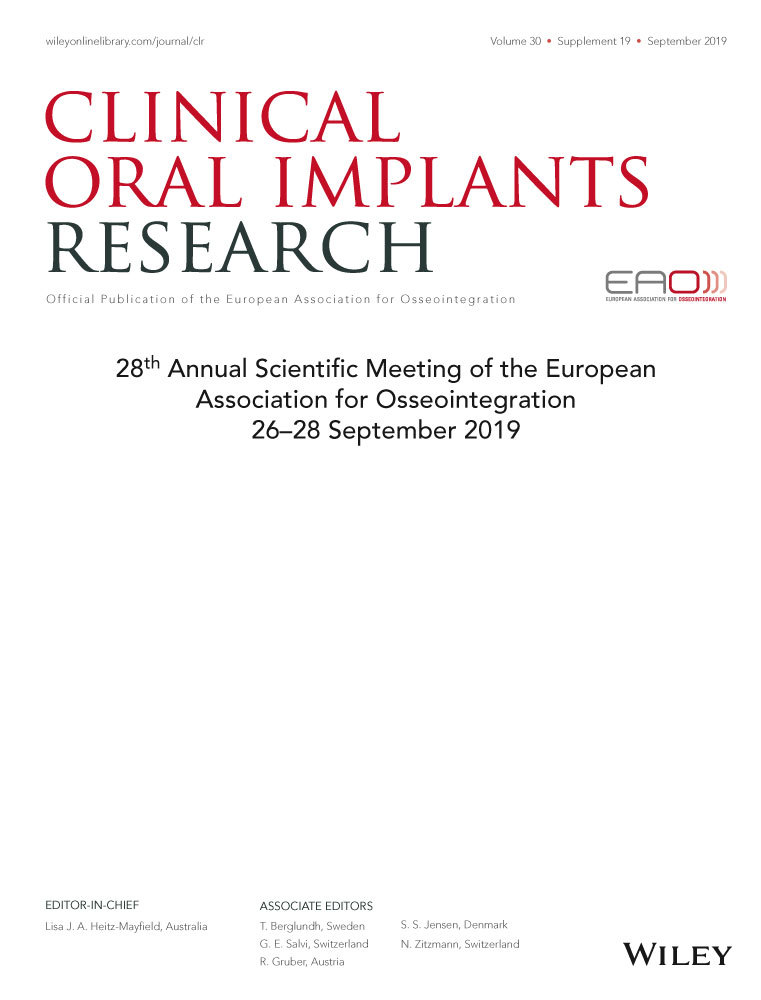Radiographic changes in trabecular bone around implant-supported fixed complete dentures
15622 Poster Display Clinical Research – Prosthetics
Background
The functional occlusal loading of dental implants may cause cycles of micro-damage and repair in periimplantar bone, leading to a dynamic reactional remodelling and osseodensification in regions of metabolically active bone.
Aim/Hypothesis
This prospective study aimed at analysing the radiographic changes in trabecular micro-structure of periimplantar bone of implant-supported fixed complete dentures (IFCDs) during 3 years of functional loading.
Material and Methods
In 30 patients (22 women+ average age 62 ± 7.8 years), 63 digital periapical radiographs of distal implants of IFCDs were acquired at prosthesis installation and after 1 and 3 years of functional loading. The images of each implant were superimposed to extract data from a region of interest (ROI) selected in the implant mesial and distal sides. Radiographic data were collected by means of first order statistics of gray levels- mean, standard deviation and coefficient of variation+ and second order statistics (texture analysis parameters)- angular second moment, contrast, entropy and correlation. Maximum bite force, presence of bruxism, dental arch, use of provisional prostheses and time of functional loading were analysed as possible factors responsible for the alteration in bone density around the implants. A hierarchical linear regression of mixed effects tested the relation between radiographic changes in gray levels and texture characteristics and the clinical factors over time
Results
Time and maximum bite force showed a significant correlation (P < 0.05) with the increase in mean gray levels. An increase of 4.19 and 9.15 in mean gray levels was estimated after 1 and 3 years, respectively. An increase of 0.1 in mean gray levels for each additional unit of bite force (1N) was also estimated. The interaction between time and bruxism was significant (P < 0.05) for a decrease in coefficient of variation in one year, with a reduction of 0.03. For patients without bruxism, a significant reduction of 0.0129 was estimated after 3 years (P < 0.01). The clinical factors had no effect on texture analysis parameters.
Conclusion and Clinical Implications
Within the study limitations, we conclude that radiographic bone density around IFCD distal implants increased after functional loading. Time (3 years of loading), maximum bite force and bruxism have a relative effect on gray levels but not on texture analysis parameters. These findings add new clinical information for the understanding of post-loading trabecular bone modification in IFCDs.




